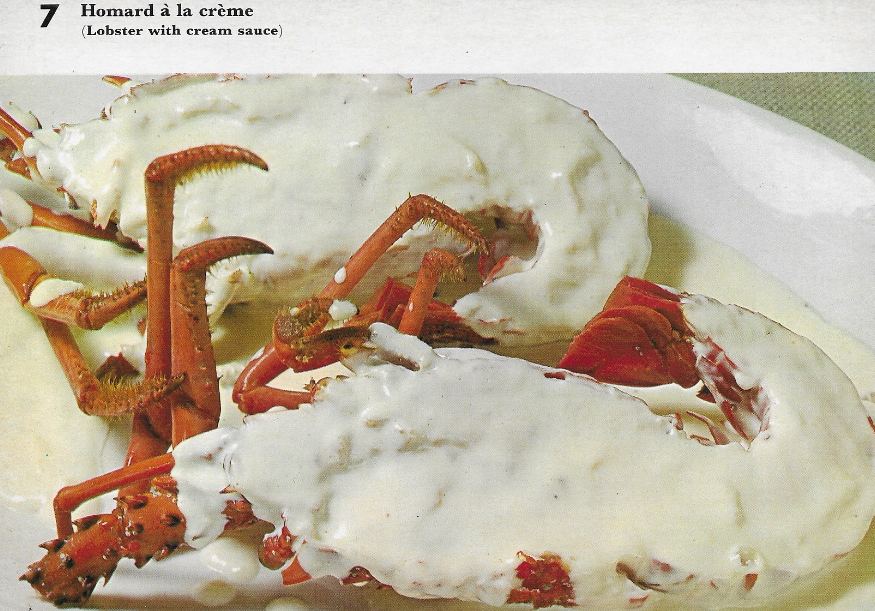
Preparation time: 5 minutes
Cooking time: about 12 minutes
To serve: 2
You will need
1 freshly cooked lobster, about 1 lb
2 oz. butter
2 oz. button mushrooms, sliced
2 tablespoons brandy
2 tablespoons dry Madeira or sherry
salt and cayenne pepper
¼ pint (U.S. ⅝ cup) thick cream
Twist off the claws and with a large sharp knife split the lobster lengthwise down the back. Lay flat the two halves cut side uppermost and discard the stomach bag (from the head) and the black intestinal cord. Remote the tail and claw meat and cut into slant-wise slices.
Melt 1 oz. butter in a saucepan and over low heat cook the mushrooms for 1-2 minutes, remove and keep warm. Add the remaining butter and the lobster to the same pan, cover and heat gently for several minutes. Pour the brandy into a heated ladle, light with a match and pour flaming over the lobster. When the flames die, add Madeira or sherry, a little salt and one shake cayenne. Heat for a minute then add cream and cook gently, stirring frequently, until cream thickens. Return mushrooms to pan and spoon the mixture into lobster shells. Serve hot. Garnish with parsley, if liked.
©️Shufunotomo Co., Ltd., Japan 1968. English text ©️The Hamlyn Publishing Group Ltd., 1968









